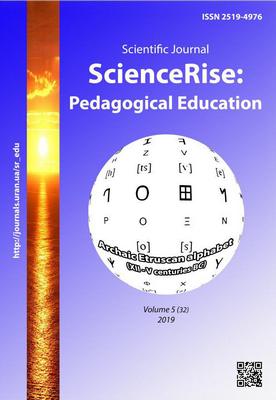Internalizing the character of discipline in integrated Islamic school students
DOI:
https://doi.org/10.15587/2519-4984.2019.174085Keywords:
Education, Internalizing The Character, Internalizing The Discipline, Islamic, School, SDIT, StudentAbstract
The aim of this study is to review theoretically the internalization of the character of discipline in SDIT (Sekolah Dasar Islam Terpadu/ Integrated Islamic Primary School) students.
This theoretical study originated from high public interest in SDIT. This becomes an interesting thing. Some print media said that this interest was based on several reasons. One of them is planting characters. This character planting is in accordance with Presidential Regulation No. 87 Th 2017 concerning strengthening character education. At SDIT they have carried out character education for a long time. Character education is carried out in the process of internalization in the SDIT environment, which both internalize the characters in the school environment. The character that is highlighted is discipline. Internalization of the character of this discipline can be done through five stages that are collaborated with character discipline indicators.
Based on the discussion of theoretical studies that have been presented it is concluded that the process of internalizing the character of discipline in integrated Islamic elementary school students and it is occurs through five stages of the disciplinary characters developed in SDIT students.
Based on the discussion of theoretical studies that have been presented review theoretically: 1) The internalization of the character in students, it is concluded that the process of internalizing the character of discipline in integrated Islamic elementary school students; 2) The process of estlabishing discipline in SDIT students, it is occurs through five stages of the disciplinary characters developed in SDIT students
References
- Wicaksono, T. Y., Friawan, D. (2011). Recent Developments in Higher Education in Indonesia: Issues and challenges. Financing Higher Education and Economic Development in East Asia. doi: https://doi.org/10.22459/fheedea.11.2011.08
- Saud, U., Johnston, M. (2006). Cross‐cultural influences on teacher education reform: reflections on implementing the integrated curriculum in Indonesia. Journal of Education for Teaching, 32 (1), 3–20. doi: https://doi.org/10.1080/02607470500510894
- Ali, M. (2005). E-learning in the Indonesian education system. Asia-Pacific Collaborative education Journal, 1 (2), 15–24.
- Yulianto, A. (2016). Pendidikan Ramah Anak Studi Kasus SDIT Nur Hidayah Surakarta. At-Tarbawi: Jurnal Kajian Kependidikan Islam, 1 (2), 137. doi: https://doi.org/10.22515/attarbawi.v1i2.192
- Peraturan Presiden RI Nomor 87, Tahun 2017, tentang Penguatan Pendidikan Karakter. Available at: https://bulelengkab.go.id/assets/instansikab/126/bankdata/peraturan-presiden-ri-nomor-87-tahun-2017-17.pdf
- Hiroyuki, A., Juliawan, J., Sudarsana, I. K. (2018). Internalization Values Of Character Education Towards The Teruna-Daha In The Medi-Median Tradition. Vidyottama Sanatana: International Journal of Hindu Science and Religious Studies, 2 (2), 232–238. doi: https://doi.org/10.25078/ijhsrs.v2i2.623
- Muhadjir, N. (2000). Ilmu pendidikan dan perubahan sosial: teori pendidikan pelaku sosial kreatif. Yogyakarta: Teke Sarasin.
- Curvin, R. L., Mindler, A. N. (1999). Discipline With Dignity. Association For Supervision And Curriculum Development.
- Arikunto, S. (2005). Dasar-dasar evaluasi pendidikan. Jakarta: Bumi Aksara.
- Soemantri, Mulyadi dan Permana, J. (1999). Strategi Belajar Mengajar. Jakarta: Depdikbud.
- Izzaty, R. E. (2012). Perkembangan peserta didik. Yogyakarta: UNY Press
Downloads
Published
How to Cite
Issue
Section
License
Copyright (c) 2019 - Anita, Wuri Wuryandani

This work is licensed under a Creative Commons Attribution 4.0 International License.
Our journal abides by the Creative Commons CC BY copyright rights and permissions for open access journals.
Authors, who are published in this journal, agree to the following conditions:
1. The authors reserve the right to authorship of the work and pass the first publication right of this work to the journal under the terms of a Creative Commons CC BY, which allows others to freely distribute the published research with the obligatory reference to the authors of the original work and the first publication of the work in this journal.
2. The authors have the right to conclude separate supplement agreements that relate to non-exclusive work distribution in the form in which it has been published by the journal (for example, to upload the work to the online storage of the journal or publish it as part of a monograph), provided that the reference to the first publication of the work in this journal is included.








